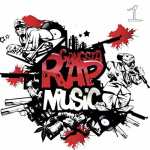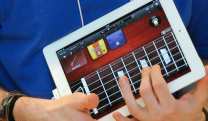| What are digital musicians? | |||
 |
There are, of course, many different musical traditions and many different ways of cla- ssifying | ||
| musicians according to their back-ground. Some classifications are made by musicians themselves, others are made by writers, critics or academics. No single way is really satisfactory, because music tends to seep through its own porous boundaries. It is highly likely that a musician will show characteristics of more than one type. Many musicians who knowingly work within highly established traditions, such as ‘classical’ music and certain forms of ‘folk’ music, take pitch as a starting point for their musical training. These musicians generally play an acoustic instrument as their main practice, and they travel a prescribed career path that involves the gradual evolution of technique and musicianship. The criteria for recogni-sing virtuosity are clearly established, and there is broad agreement among listeners about the level that an individual musician has attained. | |||
 |
Indian raga, Javanese game-lan, Chinese folk music, Western classical music and some | ||
| forms of jazz, are all examples of such established traditions. What these systems have in common is an established set of skills and a standard practice. The relationship with pitch is a constant, whether it is the microtonal sruti of the raga, the harmonious relationship between the instruments of the gamelan orchestra, the modal infl ections of Chinese folk music or the twelve notes to an octave of Western music. The first piano lesson generally begins with the note ‘middle C’, just above the keyhole in the piano frame, the middle of the keyboard. From this fundamental understanding, a pianist’s training can begin. The student follows a path prescribed by experts, usually supervised by a teacher who gives ‘one- to- one’ guidance through the various levels of technical mastery to the full realisation of musical potential. So ‘technique’ is acquired. | |||
 |
Another type of musician may begin with rhy-thm, or at least beat. This inclu-des rock | ||
| and most forms of popular music. Musicians working within this tradition tend to show a relative lack of interest in pitch when compared to the fi rst type (although they do not ignore it completely). Bands without some sort of percussion section are rare, and, when they do appear, the instruments often emphasise rhythmic content in order to compensate. There is also general agreement about what constitutes a good musician in this fi eld, although it is sometimes bound up with extra- musical questions such as lifestyle, image and so on. The path to success is just as diffi cult as that for the traditional musician and is also mapped out by convention and experts. | |||
 |
As you look around the world today, it is clear that this kind of musician is the most prevalent. | ||
| On the island of Zanzibar, most musicians are drawn to rap, rather than the traditional Taarab; in Bali, the young people perform punk rock in shopping malls, in preference to gamelan under pagodas; in Iran, the underground- rave and heavy- metal scenes fl ourish in spite of attempts by the regime to limit expression to traditional Iranian forms such as the Radif. But in many of these cases, the musicians are concerned to introduce traditional instruments 2 New technologies, new musicians and sounds into the more Western forms. Globalisation is complex, and there is more going on here than just a Westernisation of world culture. A musical commitment to traditional music does not necessarily prevent an involvement in bands, or vice versa. Recent musical history is peppered with examples of ‘classically trained’ popular musicians or popular musicians who have found a voice in classical forms. Jazz seems to sit somewhere between the two. These categories are not rigid. | |||
 |
A third tradition starts from timbre. This type of musician is harder to pin down, | ||
| for the simple reason that many timbre- focused artists do not consider themselves to be musicians at all, or do not use the word ‘music’ to describe what they produce. Into this category can be placed the majority of those working in electronic and electro- acoustic1 music, but also sonic art, sound- art, sound design and various forms of radiophonic2 and speech- based work. By dealing with sounds rather than notes, these musicians have changed the nature of music itself, raising questions about what is ‘musical’. The conventions of music seem inadequate to describe their activities. These musicians may even begin to challenge music’s very existence, since so much of their prime material is audio and lacks the expressive intention and cultural baggage of ‘music’. This third type of ‘musician’ generates and manipulates sound using electronic means. For the majority of the relatively short history of this kind of music, they have done so using non- digital technologies. The fixed elements of the music – the microphone and the loudspeaker – remain (and presumably always will remain) analogue, that is to say: transducers that convert sound waves into an electrical signal (in the case of the microphone) or an electrical signal into sound waves (in the case of loudspeakers). The arrival of digital technologies has effected a rapid change in, and expansion of, the techniques available to this musician. |
|||
|
It might be assumed that these ‘techno-logical’ musicians" most naturally fit into the class of "digital musicians", but in fact this is not necessarily the case. All types of musicians have always worked with technology, and all musical instruments are an example of technological innovation and deve-lopment. Even the human voice may be thought of as a technology by the singer. For each of the three types of musician described above, a new situation exists, because so many people are now faced with digital technology at some stage in their working lives. The challenge is how, and to what extent, to engage with these technologies. ‘Digital musicians’ are, therefore, not defi ned by their use of technology alone. A classical pianist giving a recital on a digital piano is not really a digital musician, nor is a composer using a notation software package to write a string quartet. These are musicians using digital tools to facilitate an outcome that is not conceived in digital terms. However, if that pianist or composer were to become intrigued by some possibility made available by the technology they are using, so much so that it starts to change the way they think about what they are doing, at that point they might start to move towards becoming a digital musician. So what specifically distinguishes ‘digital musicians’ from other musi-cians? What skills do they possess? To be a digital musician requires: • aural awareness (an ability to hear and listen both widely and accurately, linked to an understanding of how sound behaves in space and time) These are not absolute categories: ‘aural awareness’ may be considered ‘musical’, acquiring ‘cultural knowledge’ will require some ‘technical skills’ and so on. Their interde-pendency is crucial, and the digital musician will not neglect any one of them. In all respects, the digital musician will be distinguished by creativity. These are musicians in a digital world and a digital culture in which sound has joined image and text as information or data, capable of endless mutation and transformation. They are musicians brought together by shared interests in a particular musical idea or form, often regardless of national boundaries or cultural heritage. The main medium is digital technology: the personal computer in all its many manifestations, from the desktop machine to the mobile phone; the network, from local area networks to the Internet; virtual worlds and artifi - cial intelligence; multimedia and new media; software instruments and modifi ed hardware. |
|||
| They move perpetually from the known to the unknown. This is what digital musicians are. | |||
 |
|||
